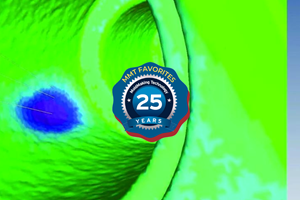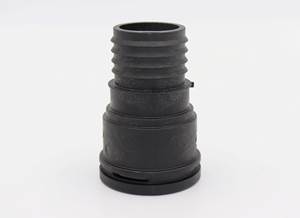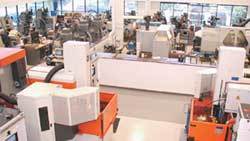High-Tech Design Strategy Clinches OEM Business
Durakon upgrades tooling and process capabilities to win growing share of original equipment market.
Durakon Industries made its mark in automotive by developing thermoformed bedliners for pickup trucks. The company’s Duraliner brand is such a staple of the aftermarket that it’s become a generic term for bedliners, says Dennis DeLeonard, VP of Sales and Marketing.
Duraliner was developed in the late 1970s. By 2000, however, Durakon (Lapeer, MI) was aware that its product lifecycle had peaked. “When you have a product that’s 20 years old and is sold more on the accessories side, it’s not desirable,” DeLeonard notes.
The company decided to broaden its offerings and growth potential by designing and thermoforming original equipment for automakers. The strategy required major investments in tooling, process technology and facilities to satisfy Detroit’s quality standards, as well as persistence in seeking new business and the ability to make design changes while hewing to delivery schedules. This last point is especially important since automakers spend huge amounts of money promoting new-car launches on specific dates.
It was a daunting effort, but in less than a decade Durakon has become a key supplier in a number of OEM programs. Automotive—both original and aftermarket—accounts for virtually all of the company’s business. Durakon is private, but sales are estimated to be around $100 million in 2007, with growth projected for 2008.
Much of Durakon’s success in automotive stems from twin-sheet forming capabilities, and from expertise with paint films, thermoformed laminates that are gaining use on exterior panels and interior parts for their Class-A finish and durability.
Among the paint-film components Durakon has developed are rocker panels for the Buick Lucerne and Cadillac STS-V, front fascia for Jeep and for the Saab 9-7X SUV, and stone-impingement shields for rear fenders of the Chevrolet SSR retro pickup (produced from 2003-06). Front and rear aftermarket bumper covers for three models of the Ford Mustang (V6, GT and Bullitt) will feature a new paint film, chrome, which duplicates the metal’s look.
Durakon also thermoforms rigid tonneau covers, an outgrowth of its bedliner business. The company’s contract to supply these components on the Chevrolet Avalanche sport utility truck was recently extended to 2012. And the company is working with GM on the cargo management system for a truck version of the Hummer sport utility vehicle.
Rigorous Design and Performance Criteria
All of these parts meet rigorous design and performance criteria. DeLeonard says that in the critical area of dimensional tolerance, which is key to automotive assembly, thermoformed parts rival or exceed injection molded components. “We can hold parts to fractions of a millimeter in tolerance, which is pretty remarkable.”
Tight tolerances also are essential for the automation Durakon uses in forming and trimming parts. Twin-sheet tonneau covers, for example, are injected with foam during fabrication to improve strength and stiffness. Finished parts are robotically trimmed.
These features, coupled with the large-part capabilities of thermoforming, fast fabrication of tools compared to injection molds and their substantially lower cost, make the process an attractive and growing option for automakers.
DeLeonard credits tooling for the dimensional accuracy of parts. Durakon doesn’t build tools but does design them. The company has approved toolmakers that fabricate the molds, among them Portage Casting & Mold (Portage, WI). Durakon does maintenance on the tools, however, and some modifications.
He says that recent efforts by engineers focus on designing tools to run as close to perfect as possible on the first shot. In the past, there was usually some back and forth between the production floor and the toolmaker as a mold was fine-tuned. “Our engineers now really sweat the details of shrink factors and other considerations.”
This can prolong the design process, but winds up saving money when the cost of transit back and forth from the toolmaker, the time and expense of refinements and the potential for production delays are taken into consideration.
Tooling for the Mustang bumper covers reflect the attention to detail Durakon engineers invest in design. The rear covers are the same for all three models, but the front covers are different sizes on the six-cylinder (V6) and eight-cylinder (GT and Bullitt) versions. DeLeonard says the amount of laminated ABS sheet that must be draped on the mold is critical to part quality—too much or too little, even if only in millimeters, will ruin the paint film’s aesthetics and create scrap.
Sales of the bumper covers by Retrospective Design (Kentwood, MI) begin in May.
The engineers also considered ways of designing the molds to account for different sales volumes of each size. Consumers might not order front and back bumper covers at one time, and there may be greater sales for cars of one engine size than another. To eliminate the need to stock excess product inventory, Durakon developed a design that permits the mold bases of the front and back covers to be paired when orders require equal amounts of both, and separated when demand for one or the other surges.
Most of the accuracy Durakon achieves in its tools is owed to advanced CNC machining technology, especially five-axis systems, says Dennis Griep, President of Portage Casting & Mold. “As the technology matures, you reap the benefits of new and upgraded software and equipment that produces tooling at high rates of accuracy.”
Griep says Portage, which specializes in tools for thermoforming, uses five-axis machining systems for most of its fabrication work. “The benefit is their more complex geometry, the elimination of multiple setups from one machine to another due to the fourth and fifth axes, and the ability to use shorter tool lengths and proper feeds and speeds,” he says. “You can machine in a more efficient way and get better surface finishes and tighter tolerances.”
Wow Factor Leads to Growth
DeLeonard says that when automakers see what Durakon has done in tool design and manufacturing, they’re receptive to other applications. “The ‘wow factor’ makes them think about what else thermoforming can do.”
One area with growth potential is inner wheel well fenders, which the Big Three are ordering from Durakon for various models. The ability to design tooling for variable part thicknesses means the inner wheel wells combine light weight with strength from thicker walls in critical areas.
Durakon is building on its tooling and process expertise to expand beyond automotive. DeLeonard says the company is looking at transport markets, as well as undisclosed non-transportation areas.
For more information from Patrick A. Toensmeier e-mail
toensmeier@ sbcglobal.net or visit www.moldmakingtechnology.com.
Related Content
Laser Welder Yields Fast, Precise Mold Repair
Intralox's integration of the Alpha Laser ALFlak has significantly improved their tool room efficiency when it comes to difficult welds and urgent repairs.
Read MoreCT Scanning Helps Micro Molder Reduce Cost of First Article Inspections
CT scanning services performed by 3D ProScan, a division of NyproMold Inc. provides MTD Micro Molding with accurate, high-resolution internal and external measurements performed about seven times faster and at significant cost savings.
Read MoreHow to Harness 3D Scanning for Mold Tool Repairs
3D scanning supports the repair of molds with no history, drawings or design files.
Read MoreFive-Axis Graphite Mill With Automation Debottlenecks Electrode Machining
Five-axis electrode cutting enabled Preferred Tool to EDM complex internal screw geometry on an insert that otherwise would have had to be outsourced.
Read MoreRead Next
Courtesy Mold & Tool/REXAM Mold Manufacturing: Change is Good!
Over the past decade this turnkey shop changed ownership and thrives with a focus on high cavitation, tight tolerance molds.
Read MoreHow to Use Strategic Planning Tools, Data to Manage the Human Side of Business
Q&A with Marion Wells, MMT EAB member and founder of Human Asset Management.
Read MoreHow to Use Continuing Education to Remain Competitive in Moldmaking
Continued training helps moldmakers make tooling decisions and properly use the latest cutting tool to efficiently machine high-quality molds.
Read More




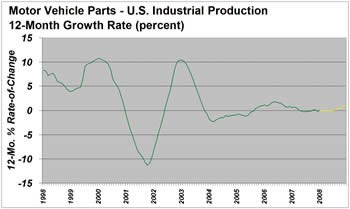
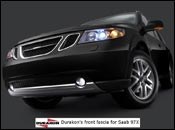
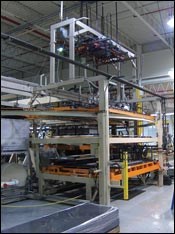
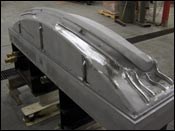










.jpg;maxWidth=300;quality=90)

